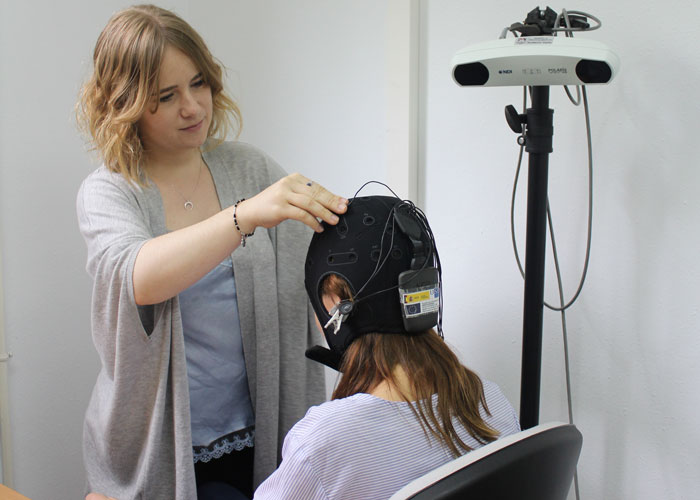Although considerable progress has been made in the last decades in the understanding of fibromyalgia (FM), its aetiology and pathophysiology are still not fully understood. It has been proposed that the hypersensitivity shown by patients with FM could be a consequence of a dysfunctional perceptual (generalised hypervigilance) and attentional (biases) pattern, which would contribute to both the development and maintenance of the disease; however, the existing evidence is inconclusive.
The main aim of this project was to explore the presence of possible dysfunctions in cortical inhibition mechanisms, increases in brain response to non-painful stimuli, and attentional biases towards disease-related stimuli in women with FM. For this purpose, electroencephalographic (EEG) activity has been studied in 63 patients with FM and 60 healthy controls, during the execution of widely researched and validated tasks (P50 paradigm, tasks using intense stimulation, emotional Stroop). The results obtained do not confirm deficits in sensory modulation at the pre-attentional level, nor a greater brain response to stimuli of increasing intensity, nor an attentional bias towards negative words and words related to the disease different to that of healthy people. In some tasks, a significant effect of medication was found, which could have affected the pattern of results. In addition, EEG indices suggest that FM patients devote less attentional resources during task performance. In spontaneous EEG activity, patients with FM showed increased beta band connectivity between different brain networks and alterations in some microstates parameters. These alterations, that are related to the dominance of endogenous top-down influences, can explain the limited processing of novel external events and the deterioration of flexible behavior and cognition frequently reported for FM.
Overall, the results did not support the hypothesis of generalised hypervigilance or the presence of attentional biases. Nevertheless, the study showed the need to consider subgroups of patients


